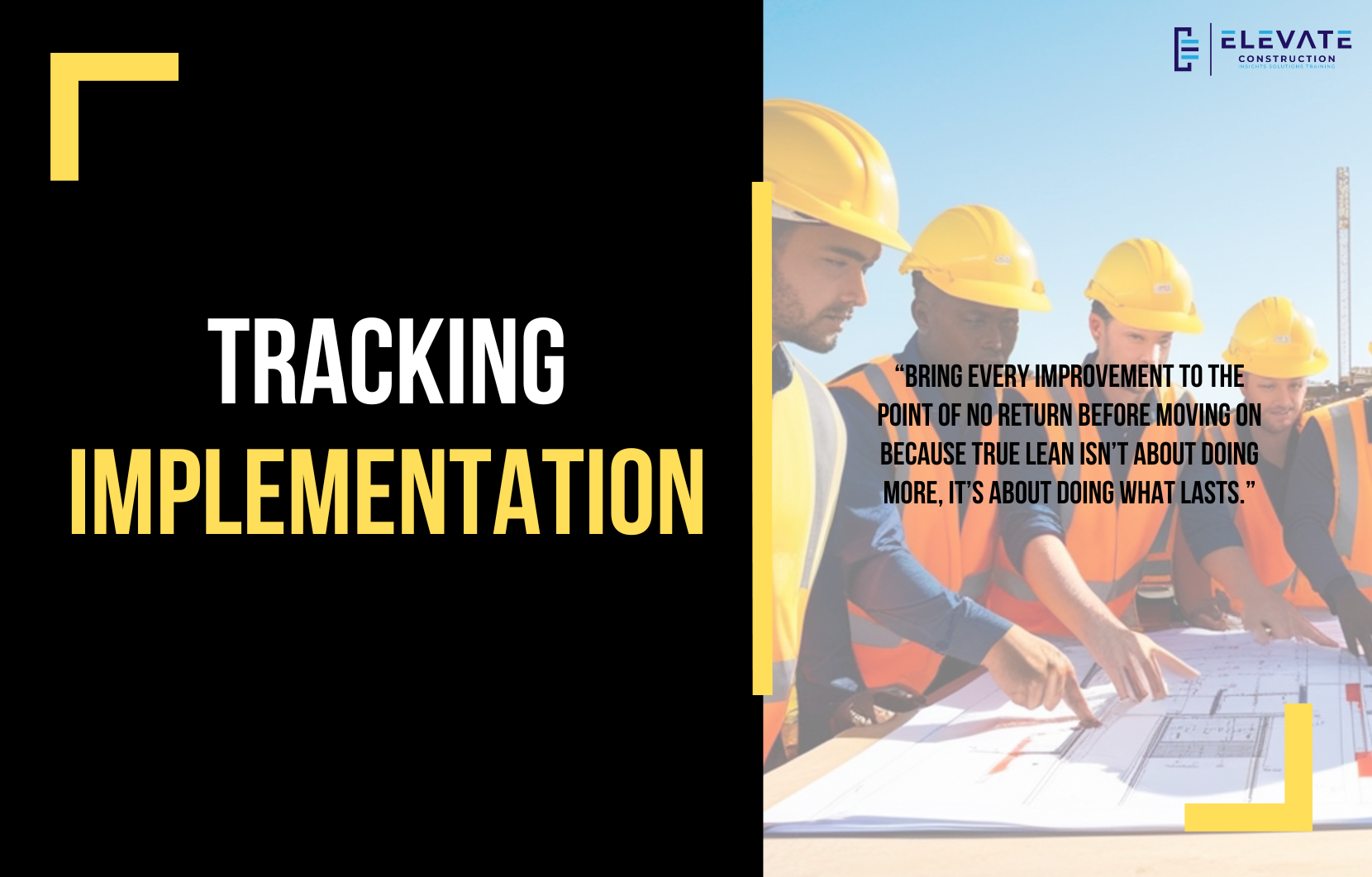How to Make Change Stick in Construction
Construction teams love new ideas. Every week, someone’s got a new tool, a new system, or a new “lean” initiative to roll out. But here’s the truth: most companies implement too much, too fast, and very little of it actually sticks.
In this blog, I want to share a simple but powerful way to track implementation a method that helps you ensure change becomes permanent, not just another flash in the pan.
When “Lean” Isn’t Really Lean
Recently, I came across a large healthcare organization working with multiple general contractors. They were forcing everyone to use a mandated scheduling software. On paper, they claimed it was a “lean” solution. In practice, it was doing the exact opposite blocking flexibility, slowing down progress, and handcuffing contractors from using systems like Takt that actually improve productivity.
That’s not Lean.
One of Toyota’s original Lean principles is that you only use thoroughly tested tools based on actual needs, not enterprise mandates.
Unfortunately, this kind of top down control still dominates our industry. Big organizations sign massive enterprise agreements that lock everyone into rigid, poorly designed systems and then wonder why projects can’t flow.
To be fair, there are great tools out there:
- Autodesk products (AutoCAD, Revit, Navisworks) incredible.
- Microsoft Office, Miro, Bluebeam excellent, flexible, and truly helpful.
But most construction-specific tech still hurts more than it helps because it’s built for administrators, not builders. Until we start choosing software that serves the field, not corporate checklists, we’ll keep seeing this disconnect between “Lean” philosophy and unlean execution.
When Owners Create Chaos
Here’s another example.
A contractor I know is working for one of the worst kinds of owners the kind that preaches ethics but practices chaos.
The owner refuses to hold the design team accountable, constantly changes materials, and keeps making massive scope changes late in the game. Instead of taking responsibility, they blame the contractor using a CPM schedule that’s already outdated.
Every week, it’s another meeting full of finger-pointing, reports, and butt chewings. No problem-solving, no teamwork, no progress just noise.
What’s tragic is that the contractor’s team has absorbed over 13 major delays using Takt planning and still gets punished for things outside their control.
This is the dark side of bad leadership: when control replaces collaboration. Owners and reps who demand paperwork instead of performance destroy trust, morale, and flow. And worse they set the trades up for failure.
The Point of No Return
Now, let’s get into the good stuff the solution.
In our company, we’ve been tracking implementation differently. Instead of launching endless new initiatives, we identify a handful of priorities maybe six and focus on bringing each one to what I call the “point of no return.”
I actually borrowed the term from Aliens vs. Predator. In the movie, the “point of no return” is the moment when the ship doesn’t have enough fuel to go back it has to move forward.
That’s exactly what true implementation looks like.
When a change becomes so embedded that you’ll never go back to the old way you’ve reached your point of no return.
We track every initiative (like Takt implementation, integrator walks, or crew boards) weekly. We don’t just check boxes; we ask, what support do they need? What resources are missing? What’s still preventing full adoption?
Once a system crosses that line once it becomes “just how we do business” only then do we add something new. This keeps us from overwhelming the team or letting good ideas die halfway through rollout.
How You Can Apply This
If you’re running a project, department, or company, try this:
- Identify 3–5 initiatives that matter most right now.
- Track them weekly not through admin reports, but through real conversations and support.
- Bring each one to the point of no return before starting the next.
- Balance your capacity for change with your utilization of change.
Implementing 85 new ideas at once doesn’t make you innovative it makes you unstable.
The key is to focus, finish, and flow.
Final Thought
Construction doesn’t need more software, meetings, or “initiatives.” It needs leaders who stay with change long enough to make it stick. The teams that win are the ones who understand that sustainable improvement happens at the speed of trust and the pace of capacity.
Key Takeaway
Real progress happens when you stop chasing change and start tracking it. Bring every improvement to the point of no return before moving on because true Lean isn’t about doing more, it’s about doing what lasts.
If you want to learn more we have:
-Takt Virtual Training: (Click here)
-Check out our YouTube channel for more info: (Click here)
-Listen to the Elevate Construction podcast: (Click here)
-Check out our training programs and certifications: (Click here)
-The Takt Book: (Click here)
Discover Jason’s Expertise:
Meet Jason Schroeder, the driving force behind Elevate Construction IST. As the company’s owner and principal consultant, he’s dedicated to taking construction to new heights. With a wealth of industry experience, he’s crafted the Field Engineer Boot Camp and Superintendent Boot Camp – intensive training programs engineered to cultivate top-tier leaders capable of steering their teams towards success. Jason’s vision? To expand his training initiatives across the nation, empowering construction firms to soar to unprecedented levels of excellence.
On we go

